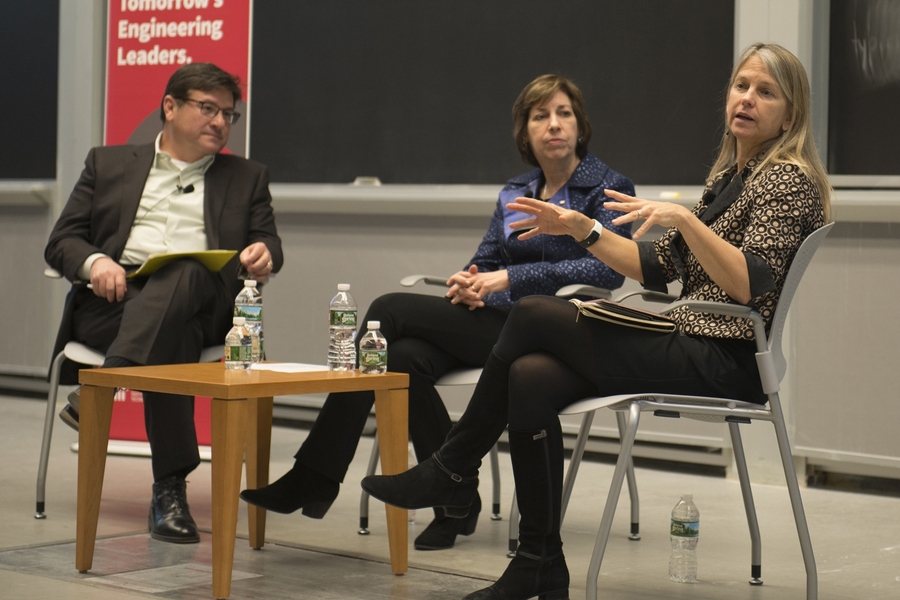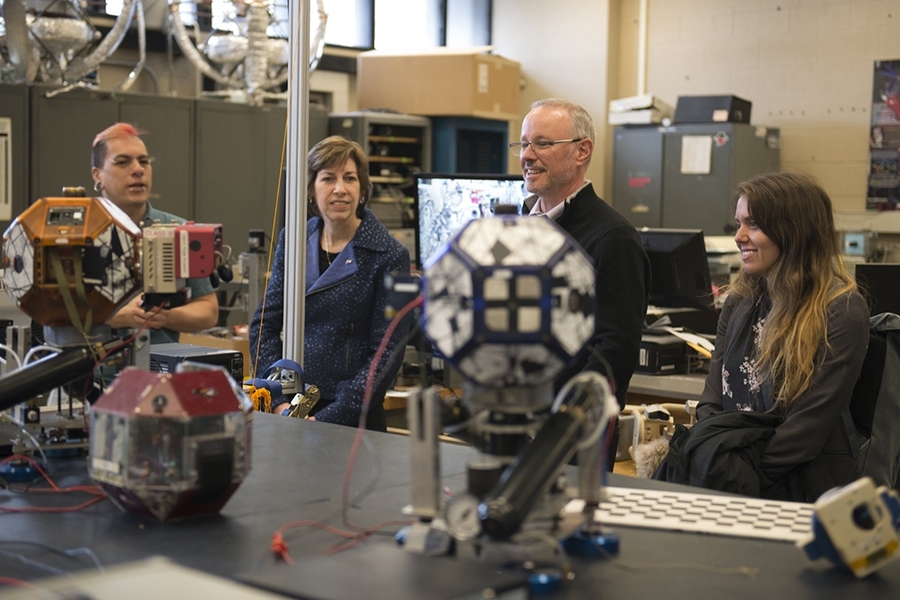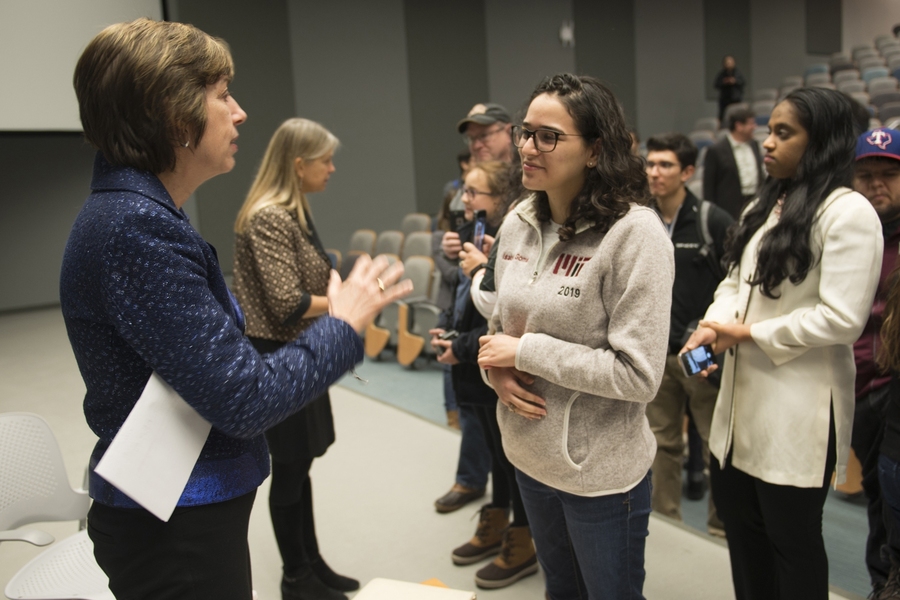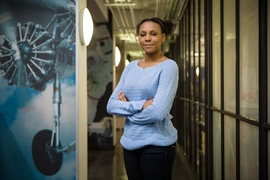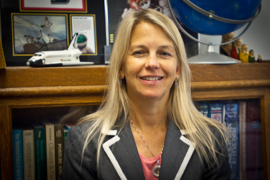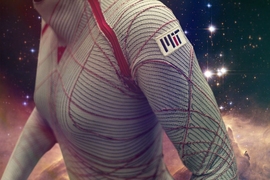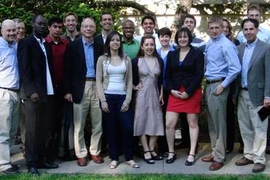“It was a Friday afternoon, cell phone rings, and the caller ID says ‘unknown,’” recalled Dava Newman, MIT Apollo Professor of Aeronautics and Astronautics. When she took the call, the voice on the other end said, “This is the White House.” A staffer was calling to notify Newman that she was being nominated for the position of NASA deputy administrator — the number 2 position at the national space agency. Initially, Newman thought it was a joke, perhaps perpetrated by one of her students. After doing a quick online search for “White House Office of Presidential Personnel,” however, she realized it was, indeed, a legitimate call to service on behalf of the president of the United States.
Agreeing to take on the position was an easy one for an engineer and professor who had already honed her leadership skills in several roles at MIT and on national boards — and for someone who even had experience teaching leadership development.
Newman and Ellen Ochoa, a retired astronaut and the director of NASA’s Johnson Space Center (JSC) in Houston, Texas, recounted this and other anecdotes about their journeys in NASA leadership at a recent MIT symposium, “Leading Human Space Exploration,” co-sponsored by the MIT Gordon Engineering Leadership Program (GELP) and the Department of Aeronautics and Astronautics (AeroAstro). The discussion was moderated by David Niño, GELP senior lecturer, and centered on what prepared these engineers for leading roles in human space exploration, as well as where NASA is heading as an institution.
Newman and Ochoa explained how they began college with very different career destinations in mind. Ochoa, an avid flute-player, wanted to major in music or business, while Newman had visions of becoming a lawyer, representing top basketball players. Music and sports were their respective passions, but thanks to a few pivotal relationships in their lives, they began research projects and careers that, over time, defined their destinies in advancing human space exploration.
“You make a lot of connections when you are interested in a variety of different things,” said Ochoa, a physics major at San Diego State University who went on to earn a doctorate in electrical engineering from Stanford University before joining NASA as an astronaut candidate. In 1993, Ochoa became the first Latin American woman in space when she flew on the space shuttle Discovery in the first of four spaceflights. In 2007, after logging close to 1,000 hours in space, Ochoa retired as an astronaut, and moved into a leadership position as deputy director of JSC. She eventually became director of the center, NASA’s “Mission Control” facility that trains astronauts, manages in-flight operations for human space missions, and develops the next generation of piloted spacecraft.
Newman, who earned an aerospace bachelor’s at Notre Dame followed by two master’s — one in AeroAstro and one in technology and policy — and a PhD in AeroAstro from MIT, did heed the White House call and was confirmed as NASA deputy administrator in 2015. She remained in that position through the end of the Obama administration, returning to her research and teaching roles at MIT in January 2017.
During the discussion, Niño highlighted some of the opportunities available to MIT engineering students that help them identify and hone their own leadership skills. Ochoa expressed admiration for a program with such an express focus on leadership training for engineers. “I don’t recall ever even hearing the word leadership as part my graduate school experience,” Ochoa said. “Leadership provides an ability to influence the things that you care most about.” Meanwhile, Newman emphasized the importance developing and practicing skills such as negotiating, listening, inventing, and collaborating.
The future of NASA, as these leaders see it, will rely in large part on these very skills as NASA builds the international partnerships that will become central to advancing deep space human exploration. “NASA’s future is very bright,” explained Newman. “Its responsibilities will increase among those agencies that are central to U.S. leadership in science and technology.”
